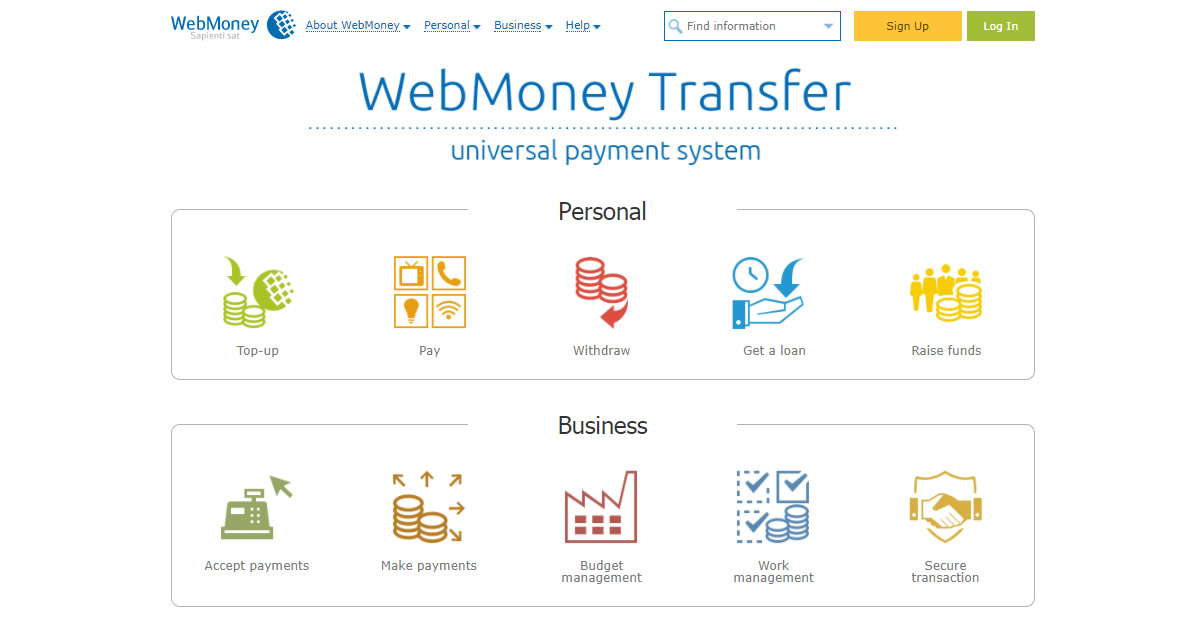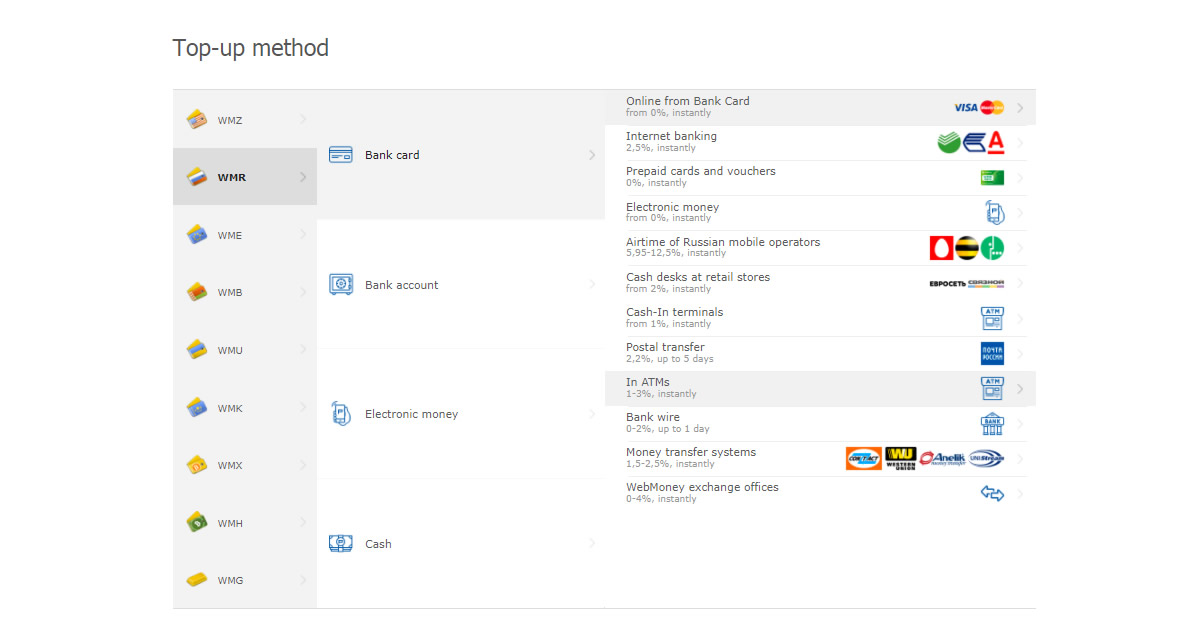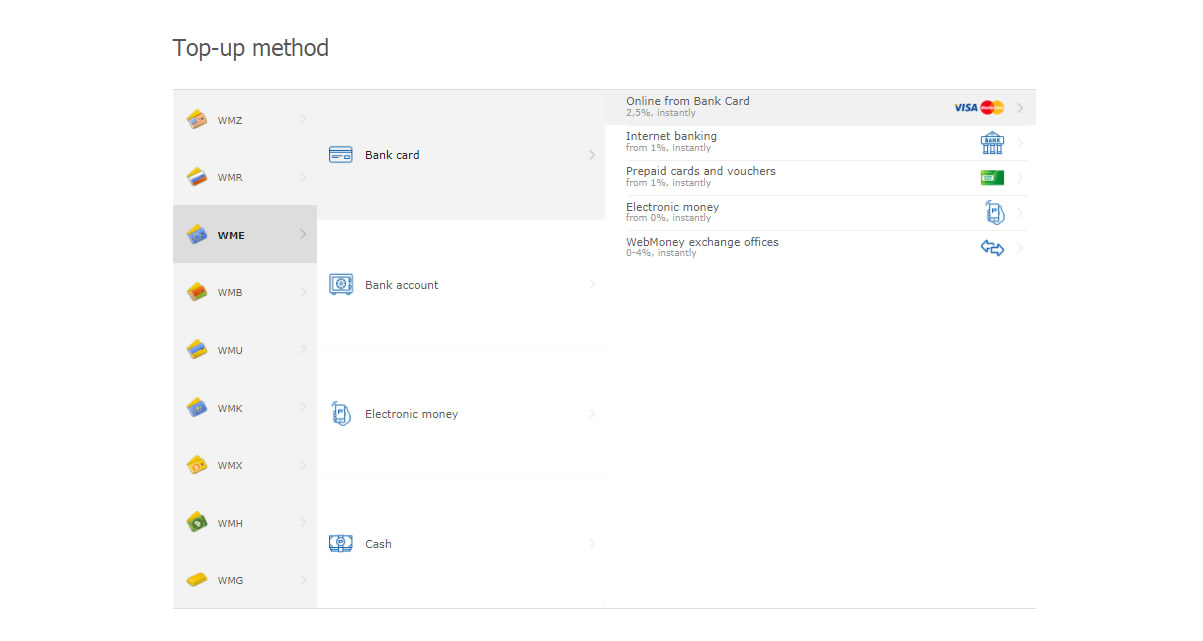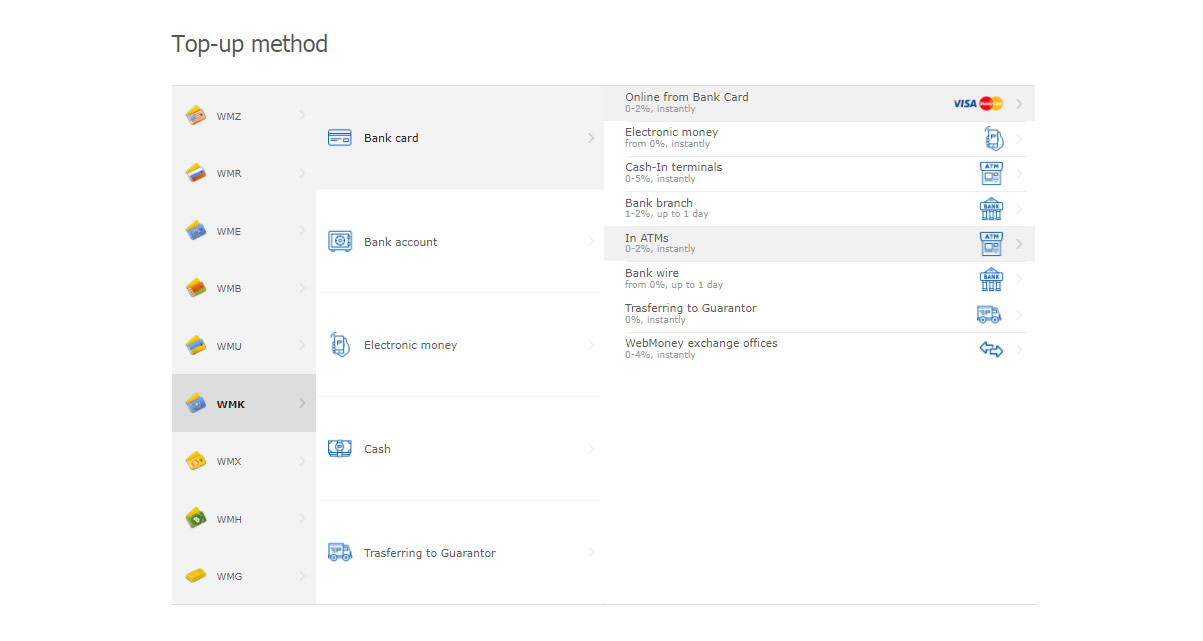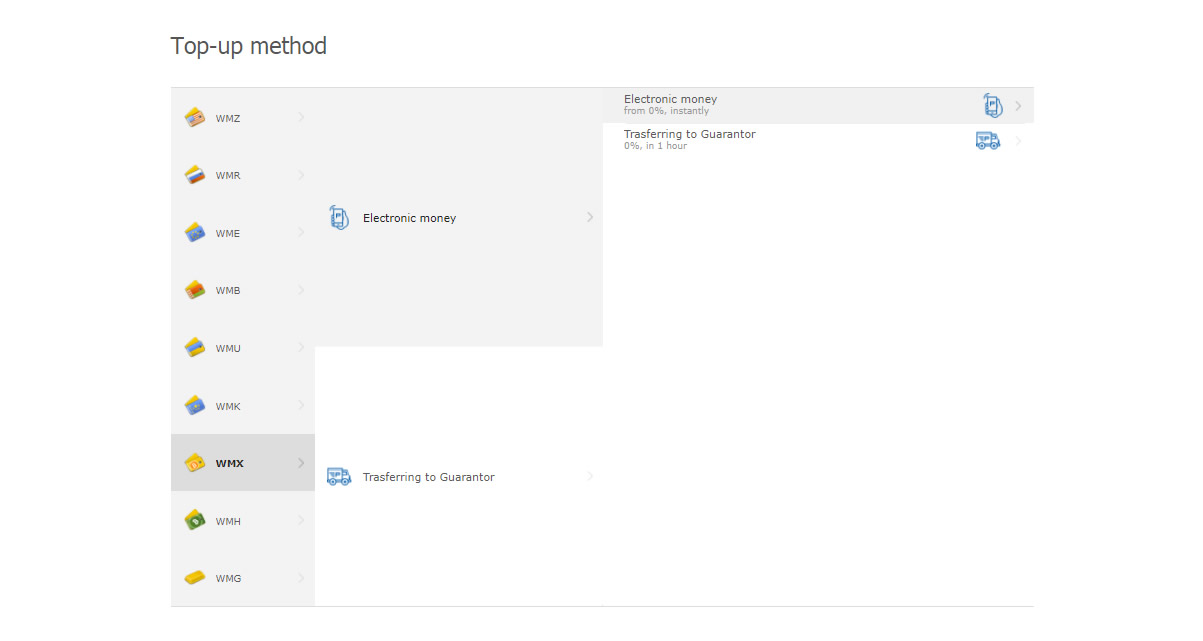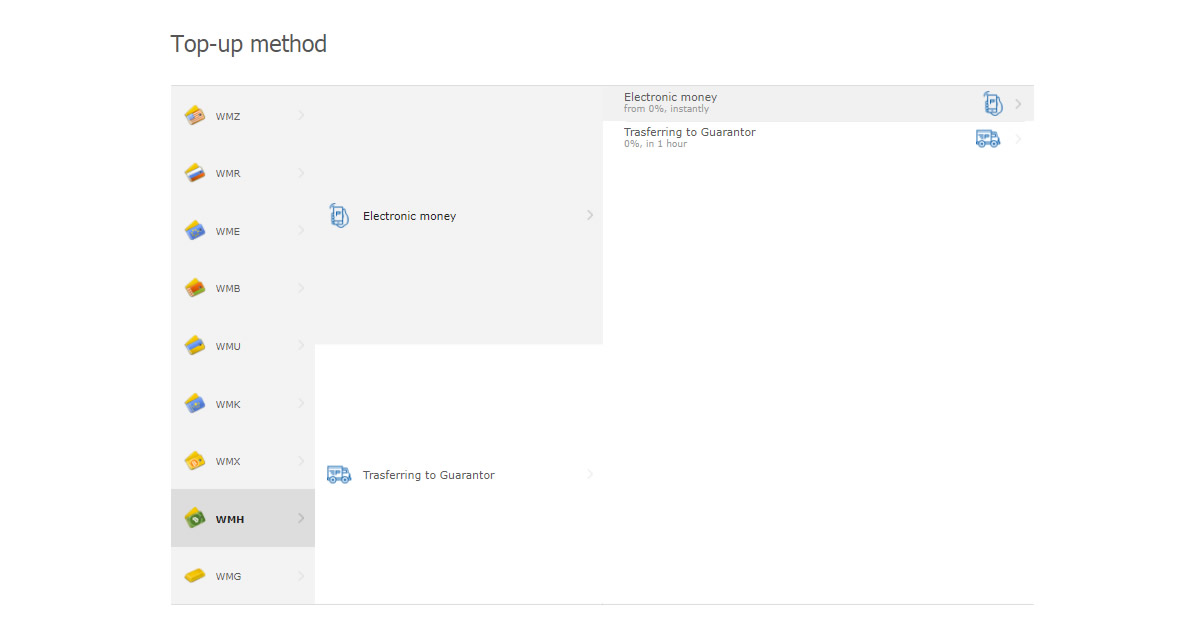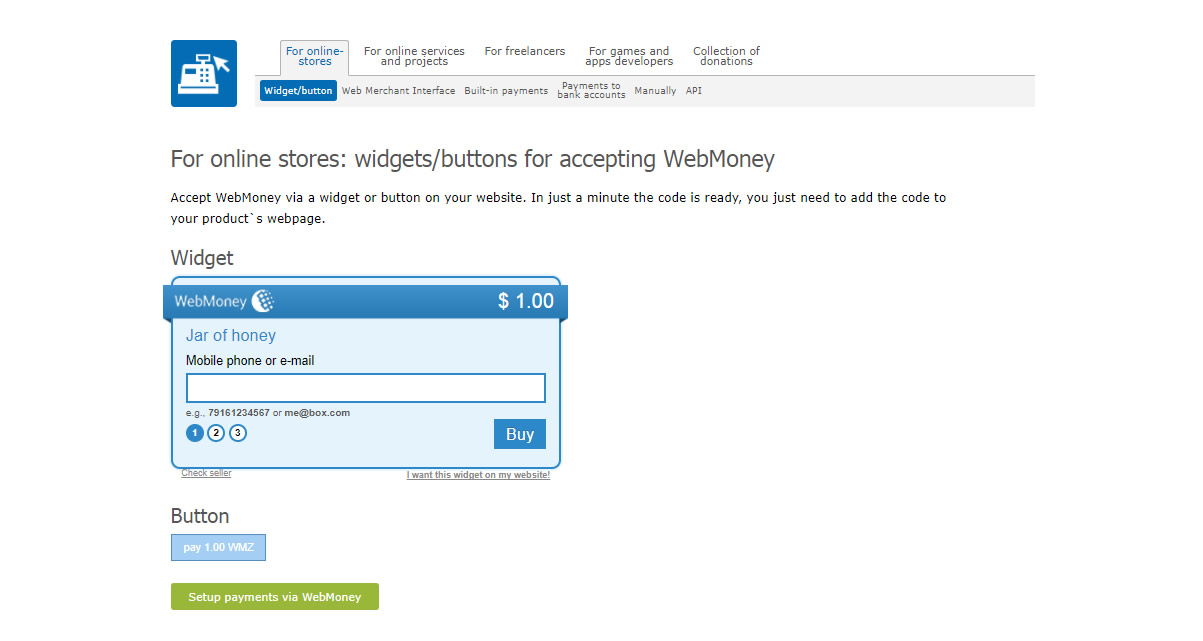WebMoney Transfer is a global settlement system and environment for online business activities, established in 1998. Since then, over 34 million people from all over the world have joined the system.
WebMoney offers services which will allow you to keep track of your funds, attract funding, resolve disputes and make secure transactions.
The technology offered by WebMoney is based on a set of standardised interfaces, which system participants can use for managing their valuables property rights, kept safe by specialised companies known as Guarantors. System users can register any number of WM purses with any Guarantor. All purses belong to a single user are conveniently kept in a Keeper which is assigned to the user`s WMID registration number. Valuables within the system are measured in the WebMoney units (WM). To interact internally, all system participants are required to provide personal information verified by the Certification service.
Each system participant is automatically assigned with the internal system parameter available for public viewing, called Business Level, which is based upon the number of transactions exchanged with other system users.
Personal
Business
Security and privacy
WebMoney Transfer technology is developed taking into consideration contemporary security requirements to online information management systems.
Information verification is the key point in provision security to any data passing through the System.
WebMoney Transfer provides 3 main authentication methods. These are:
- Login and password. You can use your WMID, phone number or e-mail specified during registration as a login. Usually, this method is followed by an additional confirmation.
- Files with secret keys. To launch WM Keeper Classic you will need: a unique 12-symbol WM-identifier, password (set by the user), and files with the secret key and wallets stored in the computer memory. ATTENTION! You must keep backup copies of keys and wallets files on a portable media stored securely! It will significantly ease recovering access to your wallet in case if the files at your PC are lost or destroyed
- Personal digital certificates.
There are two ways of additional confirmation for transactions:
- Sending SMS verification code.
- Using E-Num, service for generating single-use passwords.
System architecture allows secure access to WM-wallets of users and does not allow making settlements using WM-wallets with no funds.
Resistibility to connection faults is provided on the system level. While performing transaction, the funds are always either on WM-wallet of the sender, or WM-wallet of the receiver. There is no intermediate state in the system. Thus, it is conceptually impossible to lose WM-funds.
In addition to embedded technologies, the system supports additional services which configured by the user.
More details on security methods are available on the website dedicated to the security of Webmoney Transfer system.
Identification
During registration, a participant of WebMoney Transfer is assigned a unique number — the 12-symbol WM-identifier (WMID), required to work in the system.
Verification of the identity of WM-identifier owner within the system is made by WM-verification.
The system users mey use automated means for identification and authentication of the participants at building own applications (see section "For Developers and Web-Masters").
Confidentiality
With the help of WM Keeper, you can configure display of personal information (first name, last name, e-mail, postal address, etc. ) which will be shown to other participants of WebMoney Transfer. In this case, during transactions, the second party will receive access the information selected by you only.
If you trade partner asks you to disclose some of the above listed personal data and you agree with this requirement, then personal system security settings will allow disclosing this information.
Your WM-identifier cannot be used to learn the numbers of WM-wallets you are using. If desired, you may install on your computer unlimited number of WebMoney Keeper version and sign into the system using different WM-identifiers.





